
Foot pain while cycling (as well as foot pain after cycling) is a common experience for riders of all stripes. Almost all road cyclists, mountain bikers, and even bicycle commuters experience at least some degree of foot pain at some point during their riding lives or careers. The pain may be so severe that it prevents participation in cherished bicycling activities and events, or, in some cases, forces a premature retirement from the activity or sport—a sad, yet all-too-common outcome that's largely avoidable with the proper knowledge and equipment.
In addition to foot pain, a lot of pedalers also experience toe deformities, painful or otherwise, such as bunions, tailor's bunions, and crooked toes, as well as knee pain, hip pain, and back pain. Knee, hip, and back pain may, in many cases, be related to the feet. Your feet are the foundation of your entire body, and so if something is not right in your feet, there is a high likelihood that it may cause problems further up your kinetic chain that inhibit proper pedaling motion and turn the joyful experience of riding a bike into a sufferfest of epic proportions.
Cycling is a health and fitness pursuit that can be a lifelong leisure activity for individuals of all abilities. If you are interested in getting the most out of your riding experience and maximizing your longevity in the sport, then you must take care of your feet. The conventional cycling shoe and pedal setup are the main contributors to cycling-related foot ills, and so in this article, we want to share with you some alternatives to the traditional equipment selections made by bicycle enthusiasts. In our experience, we've found the following five products to be helpful in addressing or preventing foot pain while pedaling:
- Catalyst Pedals
- Correct Toes Toe Spacers
- Foot-Healthy Athletic Footwear
- Injinji Toe Socks and Zensah Compression Sleeves
- Pedag Metatarsal Pads or Strutz Pro Foot Pads
Let's take a closer look at these five essential products for cyclists looking to build or preserve strong, sturdy, and resilient feet.
1. Catalyst Pedals

The Catalyst Pedal by Pedaling Innovations is a total game changer for all types of cyclists. This extra-long platform pedal has a number of distinct advantages over conventional clipless cycling pedals and even other flat pedals. For example, it allows you to put both ends of your main foot arch (i.e., your forefoot and your heel) on the pedal, which helps enable natural arch support and allows you to get the very most out of every pedal stroke.
It's also the most comfortable pedal on the market, as it spreads the contact force across your entire foot, instead of routing all the pressure of the downstroke through one small focal point on the ball of your foot, which is the case with conventional pedals. You can also use this unique platform pedal in combination with comfortable and foot-healthy men's or women's athletic shoes to address or prevent foot pain (more about this in section 3 below).
For those experiencing foot pain when road cycling, mountain biking, or bicycle commuting, the Catalyst Pedal is a true revelation. Check out our in-depth review of Catalyst Pedals or listen to our interview with James Wilson, the inventor of Catalyst Pedals, to learn more about this great option for pedalers of all ages and abilities.
SHOP CATALYST PEDALS
2. Correct Toes Toe Spacers

Almost all cycling shoes available today do not allow your toes to spread out. In fact, they do quite the opposite, which is a significant problem from a foot health perspective. The importance of healthy, natural toe splay cannot be overstated when it comes to pedaling a bike. Getting your toes spread back out to the position that nature intended (i.e., in line with their corresponding metatarsal bones) is crucial in enabling a strong, powerful foot and pedal stroke and in preventing the injuries or painful problems that commonly befall cyclists.
Correct Toes toe spacers slot in-between your toes to space them anatomically, which helps alleviate or prevent problems such as bunions, hammertoes, other types of crooked toes, plantar fasciosis, etc. Correct Toes toe spacers also help engage the muscles and tendons that act on your foot, which has the beneficial effect of strengthening and rehabilitating your foot with every pedal stroke.
You can wear Correct Toes inside appropriately wide toe box footwear during athletic activity, including while cycling. In fact, this toe spacing device has its greatest corrective effect when you wear it in a weight-bearing situation, such as when standing, walking, running, or pedaling out of the saddle. It's important that you use Correct Toes toe spacers in combination with sufficiently wide toe box footwear. You should not use these spacers inside conventional cycling shoes without first performing significant modifications to the shoe. Better yet (and simplest of all), choose a comfortable, foot-healthy men's or women's athletic shoe that accommodates Correct Toes.
SHOP CORRECT TOES
3. Foot-Healthy Athletic Footwear

Footwear is a key consideration for cyclists. Most cycling shoes, especially cleated options that work in combination with clipless pedals, bind the foot and hold it in a very rigid (and deformed) configuration for long periods. Conventional cycling shoes are a leading cause of foot pain and problems in cyclists, due to their fiercely tapering toe boxes, toe spring, heel elevation, and rigid, inflexible soles.
Some believe that cycling shoes necessarily must be rigid in the sole for force transfer and power generation during the pedal stroke, but this argument becomes irrelevant when using a product such as Catalyst Pedals. The pedal itself, with its elongated shape, provides the rigid support platform for your foot to push against. This frees you up to wear men's or women's foot-healthy athletic shoes that allow your foot to function like a healthy bare foot inside your shoe.
SHOP MEN'S ATHLETIC SHOES SHOP WOMEN'S ATHLETIC SHOES
4. Injinji Toe Socks & Zensah Compression Sleeves

Toe socks, such as Injinji toe socks, possess individual toe sleeves that allow your toes the freedom to move independently. Conventional cycling socks pinch the toes together and contribute to numerous foot and toe problems, including passive toe deformities. Toe socks are an excellent choice for most athletes, as they help boost the airflow between your toes, which helps create a dry and cool environment inside your sock.
Another lower leg garment that has been embraced by athletes, including cyclists, is the Zensah Compression Leg Sleeve, which offers graduated lower leg compression to help enhance your circulation and boost your athletic recovery. These sleeves provide compression where you need it (in your calf and lower leg) and freedom in your feet and toes, where you can use a toe sock concurrently.
Injinji toe socks and Zensah compression leg sleeves work great in combination with Correct Toes. Also, the toe socks come in a variety of heights, ranging from below-the-ankle to mid-calf.
SHOP INJINJI TOE SOCKS SHOP ZENSAH COMPRESSION SLEEVES
5. Pedag Metatarsal Pads or Strutz Pro Foot Pads

Metatarsal pads are simple and unobtrusive foot pads that help straighten and flatten your toes so that they can bear their fair share of your body weight. Metatarsal pads—whether they be of the stick-and-place variety, such as Pedag metatarsal pads, or of the “wearable” variety, such as Strutz Pro foot pads (pictured above)—help spread the heads of your metatarsal bones (to give your nerves and blood vessels more room to pass), promote proper forefoot fat pad positioning (to protect the heads of your metatarsal bones), and restore a healthy balance between the tendons that flex and extend your toes. They also address and prevent ball of foot pain caused by problems such as hot spots, neuromas, sesamoiditis, and capsulitis—all common foot complaints among cyclists.
SHOP PEDAG METATARSAL PADS
SHOP STRUTZ PRO FOOT PADS
Better Together: The Synergistic Effects of Natural Footgear

Each of the products mentioned above is, on its own, an important consideration for both competitive and recreational cyclists. Using any one of these items while cycling can have a positive impact on your musculoskeletal health and leave your feet in as good a shape—or, as is often the case, in even better shape—than before you set out on your ride. And that's the hallmark of a helpful piece of footgear: It should, over time, offer you the possibility of realizing optimal foot health.
What a lot of riders find—and what we ourselves have discovered—is that using all of these items together when cycling results in the most comfortable ride possible (at least as it concerns the feet). We have also found that the combination of the products discussed here enhances our riding experience (by enabling a more efficient recruitment of the lower body prime movers) and allows us to achieve our strongest and most powerful pedal stroke possible. We hope that you too have the opportunity to use the above products to pedal and power your bike!
Additional Cycling-Related Resources

Here are some additional cycling-related resources that you might find interesting:
If you have any questions about any of the products mentioned in this article, please do reach out to us!

WANT TO IMPROVE YOUR FOOT HEALTH?
Let the team at Natural Footgear help you! Subscribe to our newsletter for the latest offers and helpful info, and sign up for our FREE email courses on various topics and foot health conditions.
Sign Up →
Want to Improve Your Foot Health?
We are here to help you every step of the way. Get our newsletter for the latest offers and helpful info, and sign up for our FREE email courses on various topics and conditions, including bunions, hammertoes, neuromas, plantar fasciosis, shin splints, ingrown toenails, and more.
Sign Up →
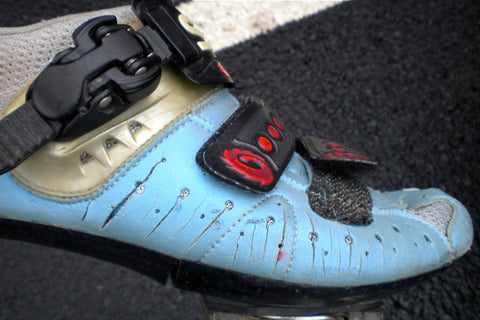 Despite changes in materials and construction techniques, not much about the shape of cycling shoes has changed over the years. Cycling shoes, like rock-climbing shoes and soccer cleats, are notoriously constricting (and uncomfortable) footwear, as they hold the big and little toes in bunion and bunionette configuration, respectively, for prolonged periods during rides. They also contribute to hot spots, ingrown toenails, plantar fascia pain, hammertoes, and other foot problems.
Read more
Despite changes in materials and construction techniques, not much about the shape of cycling shoes has changed over the years. Cycling shoes, like rock-climbing shoes and soccer cleats, are notoriously constricting (and uncomfortable) footwear, as they hold the big and little toes in bunion and bunionette configuration, respectively, for prolonged periods during rides. They also contribute to hot spots, ingrown toenails, plantar fascia pain, hammertoes, and other foot problems.
Read more










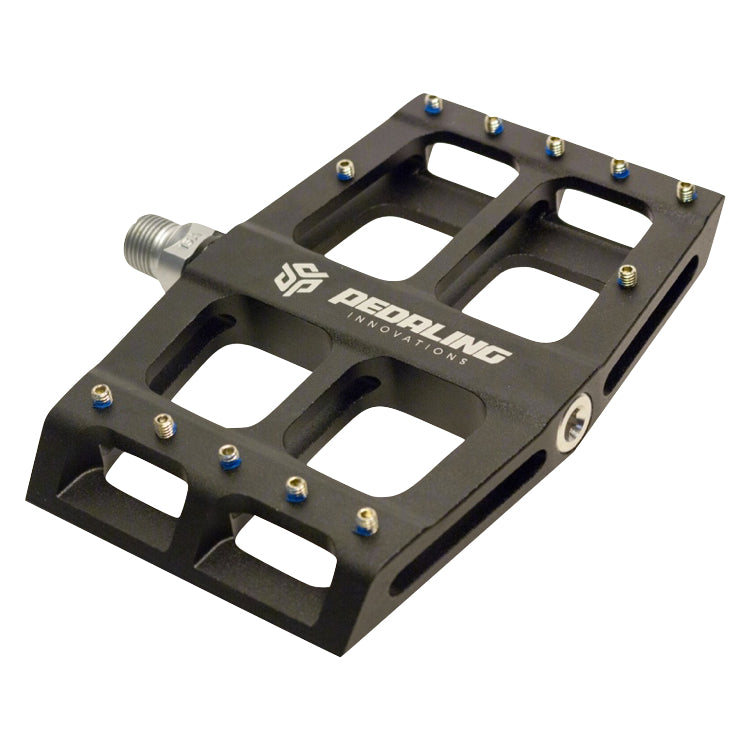
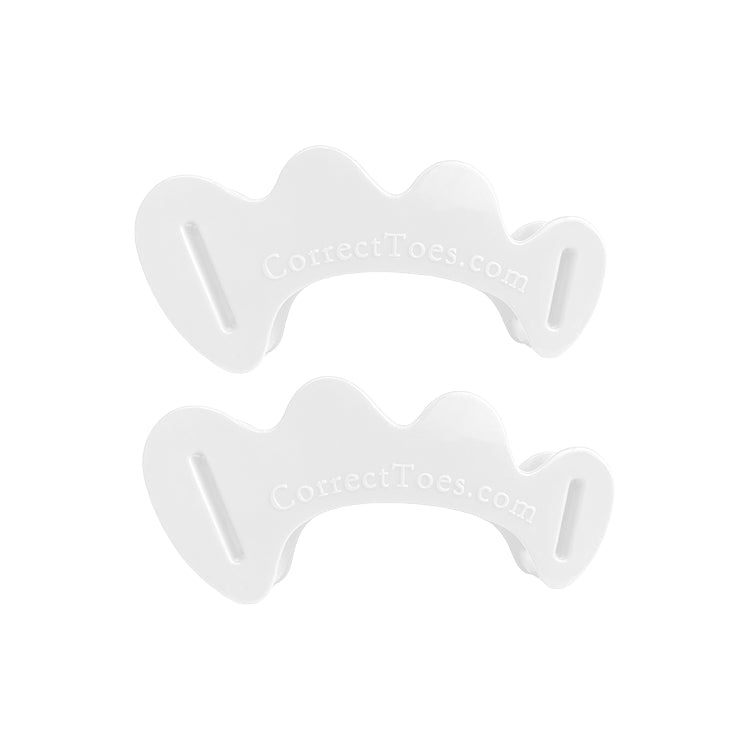
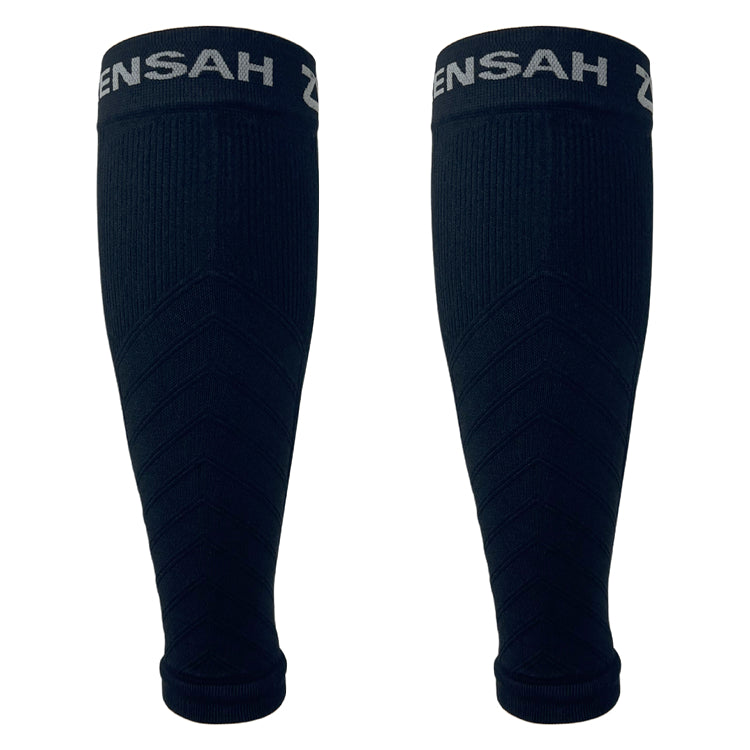
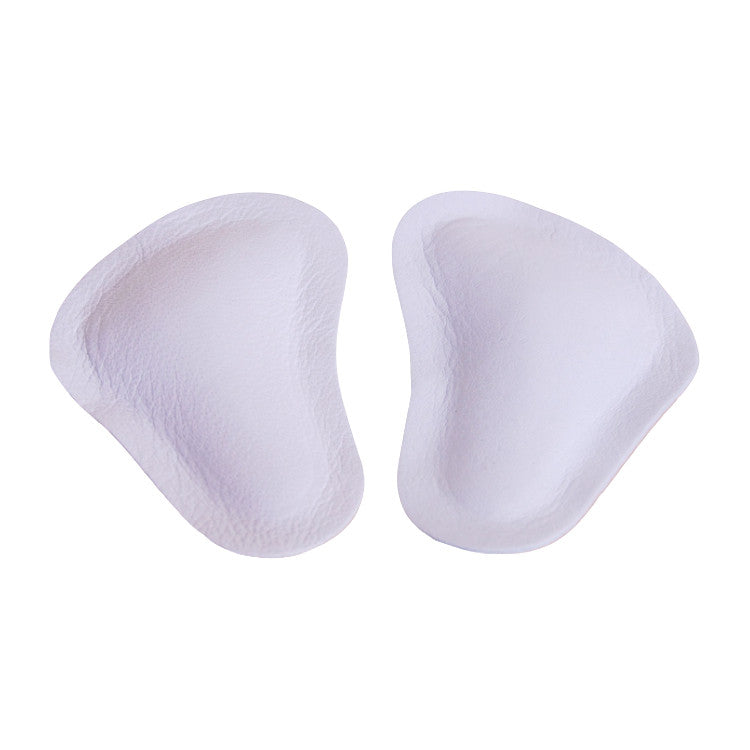
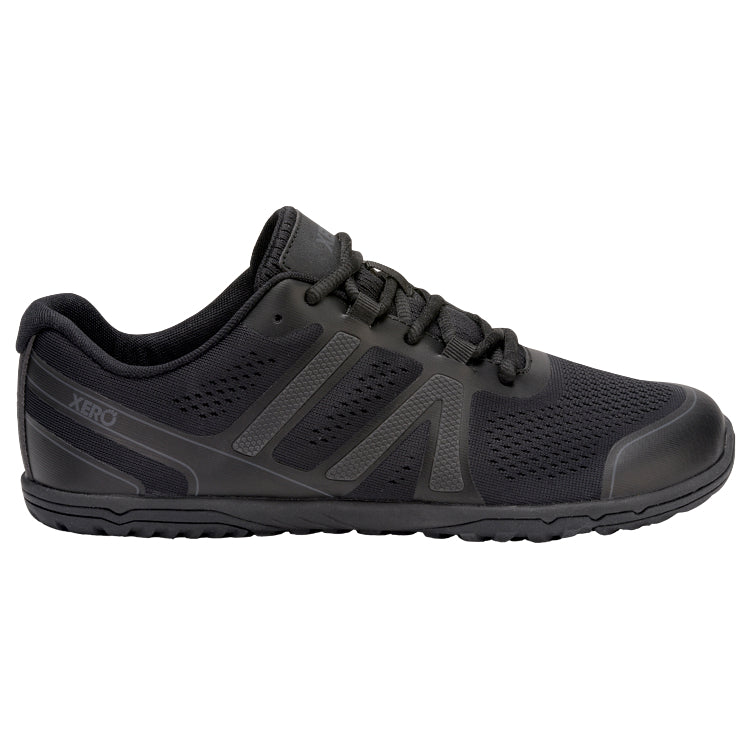
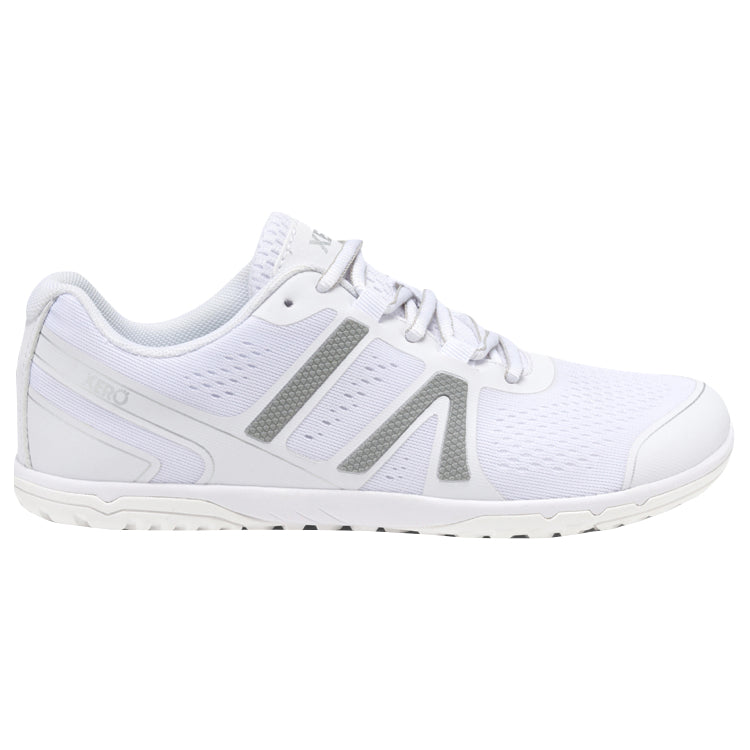
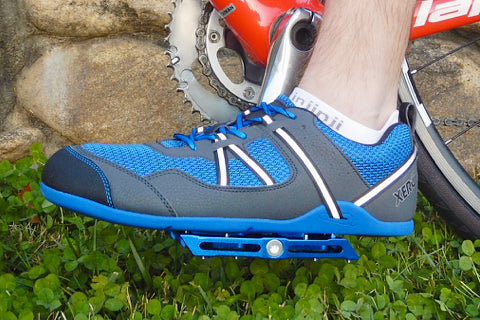
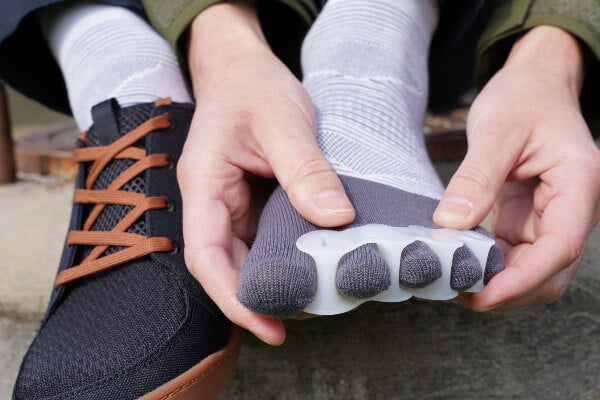
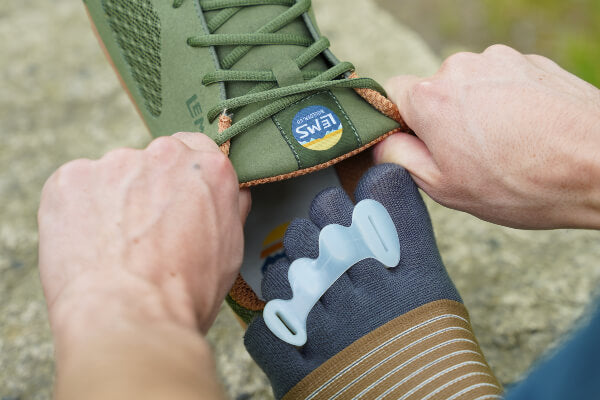
A tool I have found useful is soaking feet in magnesium salt and ice (or frozen gel bag) … also my ankle benefits from an ankle sleeve that acts similar to athletic taping! I also use knee sleeves for comfortable support.
Thank you for sharing that, Danl! We’re always happy to hear about what’s working well for other riders in terms of their go-to gear.
Cheers!
Marty Hughes, DC
So, are you advocating that we all ditch our beloved Five Tens? For me, as a sufferer of plantar fasciosis and a user of orthotic shoe inserts, I’m not about to give up my Five Tens.
Hi, Andrew,
Thank you for your comment. While we do encourage folks to make the transition to more foot-shaped and foot-healthy footwear (to build long-term foot strength and resiliency and prevent foot and toe problems), we are of the opinion that if you’ve found something that works well for you, you should keep going with that.
Please let us know if you have any other questions!
All best,
Marty Hughes, DC
What is your position on using 510 shoes in combination with Catalyst Pedals? Also, is it okay to use the Strutz foot pads on the bike trainer while doing HIIT workouts? I did purchase a pair of Xero Prio shoes, and I’m wondering if the pedals’ grub screws will be too much for the soles versus the 510 shoes?
Hi, Alan,
Thank you for your comment. And thank you for your questions! I’ll answer them in the order you posed them:
510 Shoes & Catalyst Pedals: This popular mountain biking shoe would certainly work in combination with Catalyst Pedals, but the shoe itself doesn’t live up to our standards for what constitutes a foot-healthy athletic shoe. It’s got a significantly tapering toe box—something that in and of itself would disqualify it in our books—and it possesses a needlessly rigid sole. It’s also a heavier-than-necessary shoe.
Strutz Foot Pads & HIIT Workouts: I don’t see any reason why you couldn’t wear your Strutz foot pads during your HIIT sessions. In fact, foot changes often occur most rapidly when helpful footgear is worn during high-intensity physical activity.
Xero Prios & Grub Screws: I think you’ll find that the sole of the Prios is pretty durable and will hold up nicely to the pedals’ grub screws. Dr. Robyn actually uses the Prio as her primary road cycling shoe and has not had any issues with excessive wear and tear when pairing them with Catalyst Pedals.
I hope this info helps! Please do let us know if there is anything else we can assist you with.
Kind regards,
Marty Hughes, DC
The photo in point No. 3 shows a foot placement on the Catalyst pedal that seems biomechanically counterintuitive: Toes and metatarsal arch hanging off the front of the pedal, navicular and ankle lined up with the crank. Are you implying that this is the correct way to pedal? Makes no sense, given that we want to push off with the toes, even without cleats. The position shown is highly unusual, and if that is what you are advocating, you need to explain in a separate article.
Hi, Andrew,
Thank you for your comment. Yes, from our perspective, we are saying that this is the correct way to pedal. It may be tough to tell from the photo, but portions of both the heel bone and the forefoot (i.e., the two ends of the main foot arch) are actually contacting the pedal here. We want to (and biomechanically must) push off with the toes (and, really, primarily the big toe) only in a fully weight-bearing situation, such as during walking or running. But that’s not true when cycling. With the pedal stroke, you want to mash down on the pedals using a “midfoot” position on the pedal. We talk more about this in our Catalyst Pedals Review article here:
www.naturalfootgear.com/blogs/shoe-footgear-reviews/catalyst-pedals-review
If you have any follow-up questions about the above, please do let us know.
Kind regards,
Marty Hughes, DC